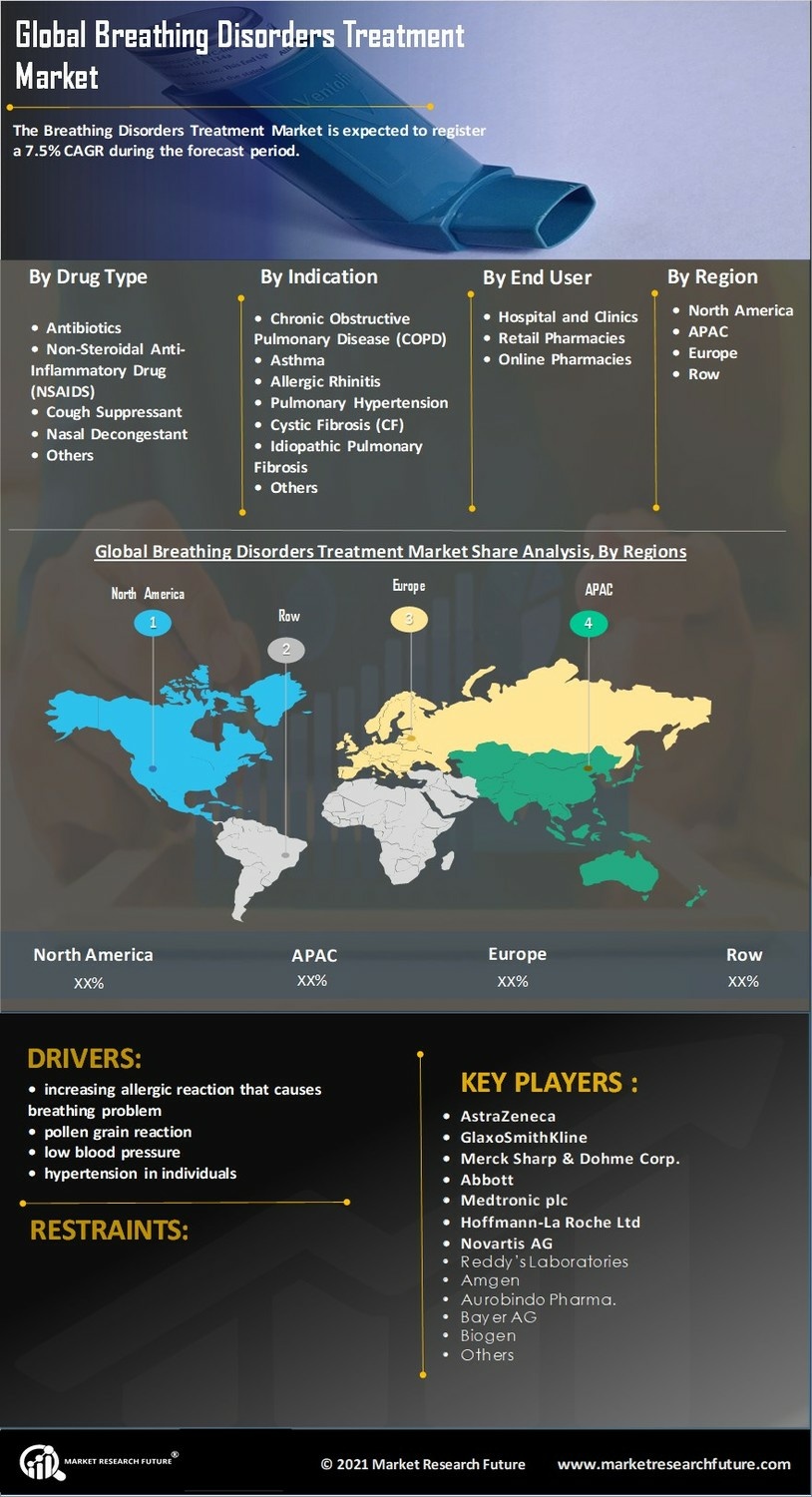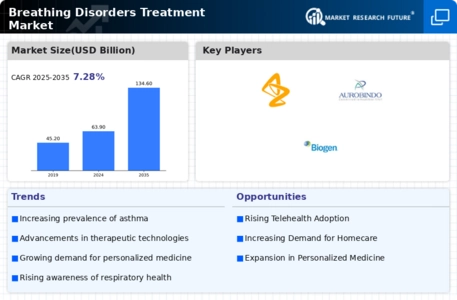Aging Population
The demographic shift towards an aging population is significantly influencing the Breathing Disorders Treatment Market. Older adults are more susceptible to respiratory conditions due to age-related physiological changes and comorbidities. Data suggests that the proportion of individuals aged 65 and older is expected to rise substantially in the coming years, leading to an increased burden of breathing disorders. This demographic trend compels healthcare providers to focus on tailored treatment solutions for the elderly, including specialized medications and therapies. Consequently, the aging population is likely to drive demand for advanced treatment options, thereby enhancing the growth prospects of the Breathing Disorders Treatment Market.
Rising Awareness and Education
There is a notable increase in awareness and education regarding breathing disorders, which is positively impacting the Breathing Disorders Treatment Market. Public health campaigns and educational initiatives have been instrumental in informing individuals about the symptoms and risks associated with respiratory conditions. This heightened awareness encourages early diagnosis and treatment, which is crucial for effective management. Furthermore, healthcare professionals are increasingly emphasizing the importance of patient education in managing these disorders. As patients become more informed about their conditions, they are more likely to seek appropriate treatment options, thereby driving the demand within the Breathing Disorders Treatment Market.
Government Initiatives and Funding
Government initiatives and funding aimed at improving respiratory health are playing a crucial role in shaping the Breathing Disorders Treatment Market. Various health authorities are implementing policies to enhance access to treatment and promote research in respiratory diseases. Increased funding for public health programs and research grants is expected to facilitate the development of new therapies and improve existing treatment protocols. Additionally, government support for awareness campaigns is likely to further educate the public about breathing disorders. These initiatives not only aim to reduce the burden of respiratory diseases but also stimulate growth within the Breathing Disorders Treatment Market.
Advancements in Pharmaceutical Research
The Breathing Disorders Treatment Market is experiencing a surge in pharmaceutical research and development, leading to the introduction of novel therapies. Recent advancements in drug formulation and delivery systems have resulted in more effective and targeted treatments for respiratory conditions. For instance, biologics and inhaled therapies have shown promising results in managing severe asthma and COPD. The investment in research is expected to continue, with pharmaceutical companies focusing on innovative solutions that address unmet medical needs. This ongoing progress in pharmaceutical research is likely to enhance treatment efficacy and patient outcomes, thereby propelling the Breathing Disorders Treatment Market forward.
Increasing Prevalence of Breathing Disorders
The rising incidence of breathing disorders, such as asthma and chronic obstructive pulmonary disease (COPD), is a primary driver of the Breathing Disorders Treatment Market. According to recent estimates, millions of individuals are affected by these conditions, leading to a heightened demand for effective treatment options. The World Health Organization indicates that respiratory diseases are among the leading causes of morbidity and mortality worldwide. This growing prevalence necessitates the development and availability of innovative therapies and medications, thereby propelling the market forward. As healthcare systems strive to address this urgent public health issue, investments in research and development are likely to increase, further stimulating the Breathing Disorders Treatment Market.

















Leave a Comment